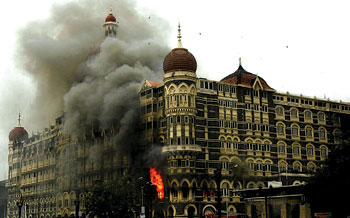INDIAN ARMED FORCES CHIEFS ON OUR RELENTLESS AND FOCUSED PUBLISHING EFFORTS

The insightful articles, inspiring narrations and analytical perspectives presented by the Editorial Team, establish an alluring connect with the reader. My compliments and best wishes to SP Guide Publications.

"Over the past 60 years, the growth of SP Guide Publications has mirrored the rising stature of Indian Navy. Its well-researched and informative magazines on Defence and Aerospace sector have served to shape an educated opinion of our military personnel, policy makers and the public alike. I wish SP's Publication team continued success, fair winds and following seas in all future endeavour!"

Since, its inception in 1964, SP Guide Publications has consistently demonstrated commitment to high-quality journalism in the aerospace and defence sectors, earning a well-deserved reputation as Asia's largest media house in this domain. I wish SP Guide Publications continued success in its pursuit of excellence.
- Operation Sindoor: Resolute yet Restrained
- India’s Operation Sindoor Sends a Clear Message to Terror and the World – ‘ZERO TOLERANCE’
- Japan and India set forth a defence cooperation consultancy framework, talks on tank and jet engines
- Terrorist Attack in Pahalgam in Kashmir: Unfolding a long surgical war against PAK
- Lt General Pratik Sharma takes over Command of Indian Army's Northern Command
Remembering 26/11
 |
By Lt. General P.C. Katoch (Retd) Former Director General of Information Systems, Indian Army |
At the recent SAARC Summit at Kathmandu, Nawaz Sharif called for cooperation in battling poverty, disease and many things but made no mention of terrorism for obvious reasons. When Prime Minister Narendra Modi spoke about 26/11 and terrorism being a vital common threat, Nawaz Sharif appeared squirming in his seat. The fact remains that six years after the dastardly terror strike in Mumbai, with clear evidence of involvement of Pakistani nationals, Pakistan has made no move to bring the perpetrators to book. As they say, a zebra can hardly change its stripes but as we pay homage to to the martyrs and the 170 people killed during this terrorist attack, we need to take stock as to where we stand in terms of counter measures. This is all the more necessary with possibility of Pakistan sponsored attacks off the coast of northern Sri Lanka andrapid radicalization of Maldives courtesy Pakistan. Fact is that during 26/11, our counter-terrorism set up was simply atrocious.

The ease with which the terrorists came by sea and executed the strike showed: zero intelligence; no appreciation despite the fact that the CIA has reportedly warned of a possible seaborne attack; no rehearsals because never appreciated; no proper response mechanism; delayed departure of NSG ex Delhi and every move on open national media giving providing minute to minute information to handlers in Pakistan; not jamming communications of the terrorists throughout the operation; poorly equipped NSG with limited night vision and without corner shots; police and STF without bullet proof jackets etc, just to name a few. The entire response was highly criticized in Israeli media. So where are we today? A major achievement has been the launch of Indian Navy’s National Command, Control & Communications Intelligence Network that would track ships at sea, for which the Information Management and Analysis Centre (IMAC) was recently inaugurated by the Defence Minister. This system is reportedly capable of picking up the type vessel used by terrorists during 26/11. However, the NATGRID appears to be still far away and there is no decision on the NCTC. The NATGRID needs to be linked to the Global Information Grid (GIG). Not only do we need the NCTC at an early date, concurrently, we need SCTC’s at State level and the four major metros. Within one year of 26/11, Maharashtra raised the special police unit (Force 1). However, despite the manpower of Force 1 being sons of the soil, they are not permitted to generate their own intelligence. More importantly, the MARCOS, NSG and Force 1 (all located at Mumbai) never undertake any joint traing, leave aside rehearsals. Foreign intelligence usually look at their own national interests and as such should be backup. However, India has always had grave voids in strategic intelligence, which are continuing. This is because in sharp contrast to modern day special operations where national intelligence agencies are employed in areas of strategic interest duly intermingled with Special Forces, in case of India, R&AW insist this is their exclusive forte. Therefore, we continue to have voids not only in strategic intelligence but are unable to tackle the roots of terrorism abroad and control the fault-lines of our adversaries. Then, the Crime and Criminal Tracking Network System (CCTN) which was supposed to have linked ‘all’ police stations in the country is still to be fully established. Yes, in recent times the NIA has shown some good results including in uncovering the conspiracy behind the Burdwan blasts but what we need in a pan India system of intelligence that ‘prevents’ terrorist strikes rather than uncovering plots after the acts have taken place. To this end, our increasing cooperation with countries like the US and Israel need to be capitalized upon, in addition to optimizing technology. We need to put in place the concept of billion eyes plus on the ground in face of mounting sub-conventional threats. We also need to fill up the manpower voids in Police, PMF and NSG, their training and equipping. A issue is also to overcome the malaise of turf battles and individual egos. India needs a Security Sector which needs to be fully integrated, equipped and trained to give a befitting national response to modern day asymmetric threats. The Security Sector must have real / near real time intelligence, a common operational picture and the means to respond effectively. We appear to be far away from such a concept.





